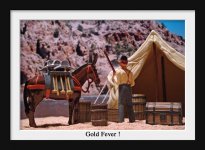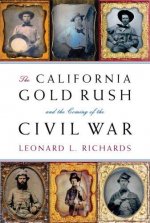Brad
Do you know this book?
From Publishers Weekly
Starred Review. Richards, a leading historian of 19th-century America (The Life and Times of Congressman John Quincy Adams), superbly illuminates gold rush California as a land in contention between national pro- and anti-slavery lobbies in the decade leading up to the Civil War. For Southerners the labor-intensive gold riches to be found in the foothills of the Sierra Nevada Mountains seemed custom-made for exploitation by slave labor working for the aggrandizement of whites. Southern men of means also saw California—up until its entrance to the Union as a free state in 1850—as a potentially large new market for slaves. Northern industrialists, on the other hand, sought California as a market for manufactured goods and as a gateway for shipping those goods to the Orient. Richards hones in most productively on the internal and external politics related to the pre-1850 California territory, revealing the intense maneuvering and impassioned rhetoric as the statehood debate proceeded. And he demonstrates how close California came to being cut in two, once Southern senators realized admittance of the territory in its entirety as a slave state was a nonstarter and proposed to "settle" for the fertile valleys to the south, there to start a new slave-holding culture in the West.
From Booklist
After the victory in the Mexican War, both northerners and southerners viewed California as the prize acquisition. With its lush, fertile soil, southerners saw the great agricultural potential, especially if California was open to slavery. Northern merchants envisioned the building of numerous ports and the chance to dominate the China trade. Of course, the discovery of gold at Sutter's Mill in January 1848 dramatically magnified the hopes and dreams of Americans devoted to "Manifest Destiny." The gold rush launched a sort of national madness that populated the West, turned some into instant millionaires, and others into frozen corpses. As Richards illustrates, it also intensified the hostility between the North and South; at a minimum, it was a contributing factor in causing the Civil War. Richards offers a broad panorama that moves seamlessly from the goldfields to the halls of Congress. This is an excellent work of popular history that will add to the appreciation of a critical epoch in our national development. Jay Freeman



